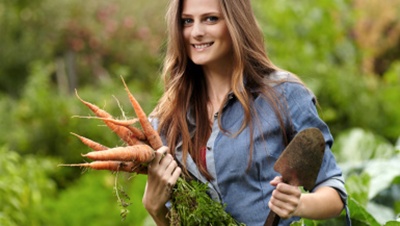
We know it never truly feels like spring until you are able to crack out the gardening tools and get your hands dirty. Plan to have your favorite seeds on hand—and before long there will be a delicious and colorful array of vegetables ready for you to enjoy!
Gardening has a number of fantastic health benefits. You save money on produce and go directly from garden to plate, you get some good stretching and exercise out in the fresh air, and you may find you even sleep better. Those are benefits that you just can’t ignore!
5 Healthy Vegetables To Plant This Season
1. Brussels Sprouts
Brussels sprouts are cruciferous health stars: An excellent source of vitamin C, K and a very good source of vitamin A, folic acid and dietary fiber. The fiber helps nourish the cells within your colon. It is best to grow your Brussels sprouts during cooler weather, so start planting in early spring so they are fully matured for the fall. It takes around 90 days for Brussels sprouts to fully grow, but they will be well worth the wait.
2. Leafy Greens
Any leafy green is perfect for your garden, whether it is kale, spinach or collard greens. Leafy greens generally will contain good amounts of vitamins A, C, E and K, as well as vitamin B6 (pyridoxine). They’re also a good source of the minerals iron, calcium and potassium.
The majority of leafy greens grow better in cool weather, which means they grow best in spring and fall. Get a jump on planting these in the spring, so they are ready to use before the first expected chill of autumn.
3. Peas
There are two basic types of peas—snap peas and snow peas. Snap peas are very tender and make a unique addition to the garden, much sweeter than those at the grocery. Peas provide you with all of your B vitamins (B1, B2, B3, and B6) which are essential for protein, carbohydrate and lipid metabolism. Other important nutrients in peas include dietary fiber, magnesium, potassium, iron and vitamin A and C.
A word of warning when growing peas: Watch out for the hot weather because the blazing sun can slow the proper growth rate. Early spring, late summer and autumn are the best times of year to grow your peas.
4. Beets
When you grow beets in the garden, you have two usable portions of the veggie, the beet roots and the beet greens, both with their own merits. Beet roots provide 1.3 mg of iron, whereas the beet greens contain 2.74 mg. Don’t throw out those tops! Try them braised with lemon and butter or cooked in pastas.
Both parts of the beet will benefit you with nutrients such as magnesium, potassium and manganese. It is best to harvest beets when they are between one and two inches across. The larger the beets, the less sweet and tender they will be.
5. Carrots
You can really taste the difference between carrots fresh from your garden. Carrots are packed full of nutrients such as vitamins A, C and K, and dietary fiber, potassium and manganese. They are also a good source of B vitamins and beta-carotene. And orange isn’t the only color: Try purple, yellow and red and see how they light up your plate.
For best taste, harvest your carrots when they are still small. Carrots left in the ground too long, or grown when the soil is too dry can become bitter and have a wooden texture. Not so tasty!
There are plenty more veggies to grow yourself, and a selection of herbs can round out your bounty (and kick up your seasonal dining): Cilantro, basil, mint and tricolor sage are a few options to try.
On top of that fresh-from-the-garden satisfaction of quality food, there is a real health benefit to spending time getting back to nature. Take in the air, meditate and enjoy the serenity!
Sources:
Vanderlinden, C., “Top 10 vegetables to grow in your garden,” Mother Nature Network web site, Dec. 21, 2012; http://www.mnn.com/your-home/organic-farming-gardening/stories/top-10-vegetables-to-grow-in-your-garden#.
Mateljan, G., The World’s Healthiest Foods: Essential Guide for the healthiest way of eating (Seattle: George Mateljan Foundation, 2007), 172, 176, 212, 216, 230, 244, 249.
Sigler, J., “The 10 Easiest Vegetables to Grow,” SparkPeople web site; http://www.sparkpeople.com/resource/nutrition_articles.asp?id=1293, last accessed April 23, 2014.













